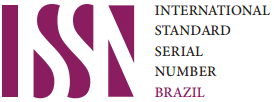Violence and its clinical, social and forensic psychiatric aspects
DOI:
https://doi.org/10.25118/2763-9037.2024.v14.1218Keywords:
crime, violence, prevention, mental disorders, drugsAbstract
The authors make a narrative review on the definition of crime, violence and its types, as well as the consequences for victims. The annual report of the Brazilian Forum on Public Security shows that the country recorded 47,503 intentional violent deaths in 2021. Questions about violent behavior perpetrated by individuals with and without mental disorders are also addressed. It is important to implement economic and social public policies, encourage sports and cultural activities, and provide medical and psychotherapeutic treatment to individuals with disorders related to the use of alcohol and substances, in order to reduce the rates of violence in our country.
Downloads
Metrics
References
Molina AGP, Gomes LF. Criminologia: introdução a seus fundamentos teóricos, introdução às bases criminológicas da Lei 9099/95 - Lei dos juizados especiais criminais. 4ª. ed. São Paulo: Revista dos Tribunais; 2002. https://books.google.com.br/books/about/Criminologia.html?id=aVhYtwAACAAJ&redir_esc=y
Oliveira FA. Manual de criminologia. Sagra Luzzatto; 1996. https://www.bibliotecadeseguranca.com.br/livros/manual-de-criminologia/
World Health Organization. Global status report on violence prevention 2014. Geeva: WHO; 2014. https://www.who.int/publications/i/item/9789241564793
Guitarra P. Tipos de violência. Disponível em: https://www.contratuh.org.br/tipos-de-violencia/ Acesso em: 9 mar 2024
Fórum Brasileiro de Segurança Pública (FBSP), Bueno S, Sobral I, Lagreca A, Carvalho T. Feminicídios em 2023. São Paulo: Fórum Brasileiro de Segurança Pública, 2024. Disponível em: https://apidspace.universilab.com.br/server/api/core/bitstreams/eca3a94f-2981-488c-af29-572a73c8a9bf/content Acesso em: 9 mar 2024.
Brasil. Câmara dos Deputados. Centro de Documentação e Informação. Lei Federal n° 11.340, de 7 de agosto de 2006 (Lei Maria da Penha). Cria mecanismos para coibir a violência doméstica e familiar contra a mulher. Disponível em: https://www2.camara.leg.br/legin/fed/lei/2006/lei-11340-7-agosto-2006-545133-normaatualizada-pl.pdf
Coelho EBS, Silva ACLG, Lindner SR (organizadoras). Violência: definições e tipologias. Florianópolis: Universidade Federal de Santa Catarina, 2014. https://violenciaesaude.ufsc.br/files/2015/12/Definicoes_Tipologias.pdf
Minayo MCS. Conceitos, teorias e tipologias de violência: a violência faz mal à saúde. In: Naiane K, Assis SG, Constantino P. Impactos da violência na saúde. Rio de Janeiro: FIOCRUZ; 2007. p. 21-42. https://books.scielo.org/id/p9jv6/pdf/njaine-9786557080948.pdf DOI: https://doi.org/10.7476/9788575415887.003
Lardén M, Nordén E, Forsman M, Långström N. Effectiveness of aggression replacement training in reducing criminal recidivism among convicted adult offenders. Crim Behav Ment Health. 2018:1–16. https://doi.org/10.1002/cbm.2092 DOI: https://doi.org/10.1002/cbm.2092
Chalub MJ. Revista Psicologia Jurídica. Ed. Escala, no5, 2007. https://revista.abpj.org.br/
Dahlin MK, Gumpert CH, Torstensson-Levander M, Svensson L, Radovic S. Mentally disordered criminal offenders: legal and criminological perspectives. Int J Law Psychiatry. 2009;32(6):377-82. https://doi.org/10.1016/j.ijlp.2009.09.007 DOI: https://doi.org/10.1016/j.ijlp.2009.09.007
Durbeej N, Palmstierna T, Ingvar Rosendahl, Berman AH, Kristiansson M, Gumpert CH. Mental Health Services and Public Safety: substance abuse outpatient visits were associated with reduced crime rates in a Swedish Cohort. Plos One. 2015;10(9): e0137780. https://doi.org/10.1371/journal.pone.0137780 DOI: https://doi.org/10.1371/journal.pone.0137780

Published
How to Cite
Conference Proceedings Volume
Section
License
Copyright (c) 2024 Alexandre Martins Valença, Lisieux Elaine de Borba Telles, José Brasileiro Dourado Junior, Leonardo Fernandez Meyer, Luiz Felipe Rigonatti, Talvane Marins de Moraes, Antônio Geraldo da Silva, Antônio Egídio Nardi

This work is licensed under a Creative Commons Attribution-NonCommercial 4.0 International License.
Debates em Psiquiatria allows the author (s) to keep their copyrights unrestricted. Allows the author (s) to retain their publication rights without restriction. Authors should ensure that the article is an original work without fabrication, fraud or plagiarism; does not infringe any copyright or right of ownership of any third party. Authors should also ensure that each one complies with the authorship requirements as recommended by the ICMJE and understand that if the article or part of it is flawed or fraudulent, each author shares responsibility.
Attribution-NonCommercial 4.0 International (CC BY-NC 4.0) - Debates em Psiquiatria is governed by the licencse CC-By-NC
You are free to:
- Share — copy and redistribute the material in any medium or format
- Adapt — remix, transform, and build upon the material
The licensor cannot revoke these freedoms as long as you follow the license terms. Under the following terms:
- Attribution — You must give appropriate credit, provide a link to the license, and indicate if changes were made. You may do so in any reasonable manner, but not in any way that suggests the licensor endorses you or your use.
- NonCommercial — You may not use the material for commercial purposes.
No additional restrictions — You may not apply legal terms or technological measures that legally restrict others from doing anything the license permits.





























